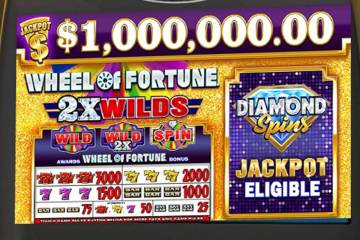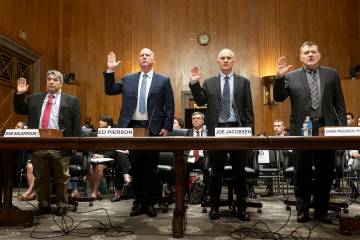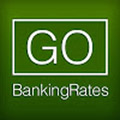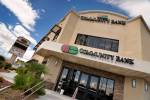6 pros and cons of traditional banks
The future of banking is changing. With high interest rates, low fees and a propensity for digital technology, online banks are successfully competing with traditional brick-and-mortar banks, forcing the big banks — like Wells Fargo and Bank of America — to go mobile.
Traditional banks are simplifying their organizational structure to reduce overhead costs and are focusing on their core competencies rather than trying to excel at everything, according to a recent report by Deloitte. In light of the rise of the financial technology — also known as fintech — industry, startups, and online banking companies looking to exploit the weaknesses of large financial institutions, there’s little doubt that the banking landscape must keep up with the changing times.
But progressive options in the financial sector don’t necessarily mean that traditional banks are a poor choice — it just depends on each customer’s particular needs. Banks are adding electronic banking, mobile check deposit and alerts to their services while continuing to provide the traditional services most customers are used to — in-person assistance, mortgage loans and more. And as traditional banks up their game to compete with the more flexible online alternatives, consumers can benefit from these changes. Learn about the advantages and disadvantages of banks so you can decide what kind of financial institution is best for your money.
Pros of Traditional Banks: More Options
Although using a traditional bank might seem old-school or too conventional, there are certain advantages unique to banking with a financial institution that has brick-and-mortar branches. Knowing some of the benefits of using a traditional bank can help you decide if it’s a good solution for keeping and handling your money:
- More options: Whether you want a personal savings or checking account, trust fund, certificate of deposit, Roth IRA, or business checking account, most major financial institutions can provide all these services in one place. Many traditional banks offer wealth management and investment services, too.
- Convenience: The leading banks, like Chase, Wells Fargo and Bank of America, have brick-and-mortar locations and ATMs — which are free to customers — all over the country.
- Best of both worlds: Many banks offer customers the flexibility of being able to walk into a branch to deposit cash or to transfer money via a smartphone. Chase Bank, for example, offers QuickPay — a free online service to send or receive money by email — which competes with fintech apps like Venmo and Square Cash. With online banks, you only have the electronic transfer option.
- Cash deposits: Despite all the progress that fintech has made, the industry still has to contend with a traditional form of currency: cash. For banking customers who deal with cash frequently, a traditional bank is an attractive and convenient option.
Cons of Traditional Banks: Low or No Interest Rates
Banks can offer critical conveniences but are not without their flaws. To help you decide if a traditional bank is the right solution for your financial needs, review some of the drawbacks to banking at a larger institution:
- Low or no interest rates: Brick-and-mortar banks are notorious for their lower interest rates on savings accounts, compared with online banks. In fact, in a recent survey by GOBankingRates, the best savings accounts were all with online banks: MySavingsDirect, Ally Bank, Barclays, iGObanking and CIT offered the top five highest interest rates.
- Wide range of fees: When you think of a traditional bank, you might also think of bank fees. Bank of America, for example, charges a $35 nonsufficient funds fee, whereas Alliant Credit Union — one of the largest credit unions open to the public — charges just $25 for an NSF fee.
- Poor customer service: A 2015 study by Consumer Reports suggested that one of the major downfalls of big banks is that they don’t understand customers’ needs or and don’t provide personalized service. According to the survey, the four mega banks — Bank of America, Chase, Citibank and Wells Fargo — which hold approximately 40 percent of all U.S. commercial bank assets, landed in the bottom fifth of the customer satisfaction rankings. Smaller financial institutions have a smaller demographic, but this seems to help them gain insight into who’s banking with them and what those customers want.
Alternatives to Large Banks
When deciding where to put your money, there are many options to consider, including credit unions, online banks and local brick-and-mortar banks. Each of these alternatives to megabanks offers advantages, depending on your needs.
- Credit unions: Credit unions are financial institutions that are cooperatively owned by all members and democratically run by members who volunteer as board members. The members vote on issues like interest rates, and because these institutions are not for profit, account holders usually get better rates on both loans and savings interest. Credit unions are insured by the National Credit Union Administration, so members’ money is secure.
- Online banks: Serving as another alternative to traditional banks, online banks such as Ally Bank, Simple or Bank 5 Connect tend to offer more favorable services and rates. For example, Ally Bank offers 0.60% APY on its checking accounts whereas Bank of America offers just 0.02% APY. Online banks don’t have to spend money on supporting many physical locations, so they’re able to pass on these savings to customers.
- Community and local banks: Community banks are a vital part of many areas, especially rural and farming communities, which depend on local banks for loans and basic services. Because these areas are usually tight-knit, these types of banks are more flexible with loan requirements than big banks. For example, the Independent Community Bankers of America Association says it considers character, family history and discretionary spending in making loans; this is not the kind of service you could typically expect to find in a big, traditional bank.
No Matter What You Choose, Safety Rules
Regardless of your choice in banking, the FDIC recommends that consumers verify the legitimacy of the bank and that all deposits are federally insured. The FDIC has a database of all insured banks that the public can access, so you can easily confirm if your bank is covered. And whether you choose a traditional bank with online banking features or an online-only bank, be aware of copycat websites that deliberately use a web address similar to that of a real bank to lure in unsuspecting customers.
RELATED
The first thing you should do with every paycheck
Every type of check fraud you have to worry about





























